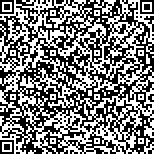下载中心
优秀审稿专家
优秀论文
相关链接
摘要

利用3种不同视线向LOS(Line Of Sight)的ENVISAT ASAR数据进行干涉处理,提取多视线向(Multi-LOS)的同震形变场;结合同震形变场特征与震源机制解,构建了改则地震双断层破裂模型;利用四叉树采样后的多视线向同震形变场进行约束,通过梯度下降法(Steepest Descent Method,SDM)与Crust2.0地壳分层模型反演了改则地震的同震滑动分布特征。结果表明:反演的形变残差得到有效控制,基本介于0±10 cm之间;主震断层的滑动量主要位于断层面2—16 km深部,最大滑动量可达1.34 m,位于断层面6.4 km深处;余震断层滑动量主要位于断层面2—6 km深部,最大滑动量可达0.90 m,位于断层面3.52 km深处;主震断层与余震断层均以正断为主,但主震断层还具有一定的左旋走滑分量,而余震断层的左旋走滑不明显;当剪切模量μ取3.2×1010 Pa时,反演获得的主震与余震地震矩M0分别为6.34×1018 N·M与1.20×1018 N·M,分别相当于矩震级MW6.47与MW5.98。
We extracts multiple Line-Of-Sight (multi-LOS) coseismic deformation fields through the interferometry of three different sets of ENVISAT ASAR data in the LOS direction, and constructs a double-fault rupture model of the Gaize earthquake by integrating deformation field characteristics with focal mechanism solutions. We also inverts the coseismic slip distribution of the Gaize earthquake though the steepest descent method and the layered crustal model of CRUST2.0 under the constraint of the quad-tree resampling of multi-LOS coseismic deformation fields. Results show that the deformation residuals of inversion are effectively controlled within 0±10 cm. The major slip distributions of the mainshock fault are located at a depth of 2 km to 16 km along the fault plane, with a maximum slip value of approximately 1.34 m at a depth of 6.4 km. The slip distributions of the aftershock fault are mostly located at a depth of 2 km to 6 km along the fault plane, with a maximum slip value of approximately 0.90 m at a depth of 3.52 km. Both the mainshock and aftershock faults are principally ruptured with the normal mode, and the mainshock fault is also ruptured with a slight left lateral striking, which is not obvious in the aftershock fault. When the shear modulus is set to 3.2×1010 Pa, the inversion seismic moments of the mainshock and aftershock are approximately 6.34×1018N·m and 1.20×1018 N·m, which lead to moment magnitudes of Mw6.47 and Mw5.98, respectively.

